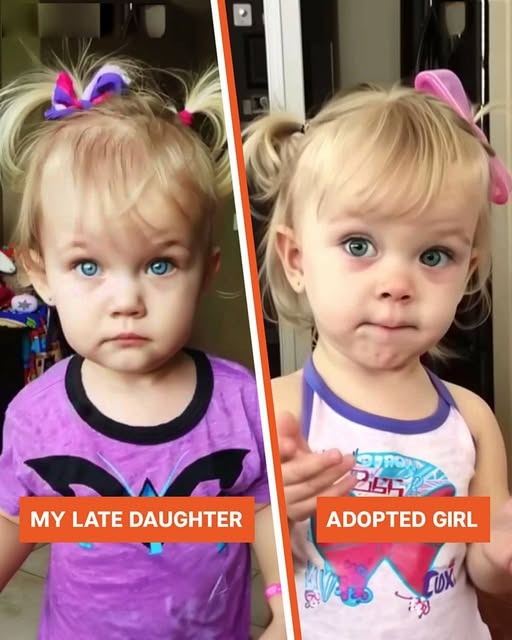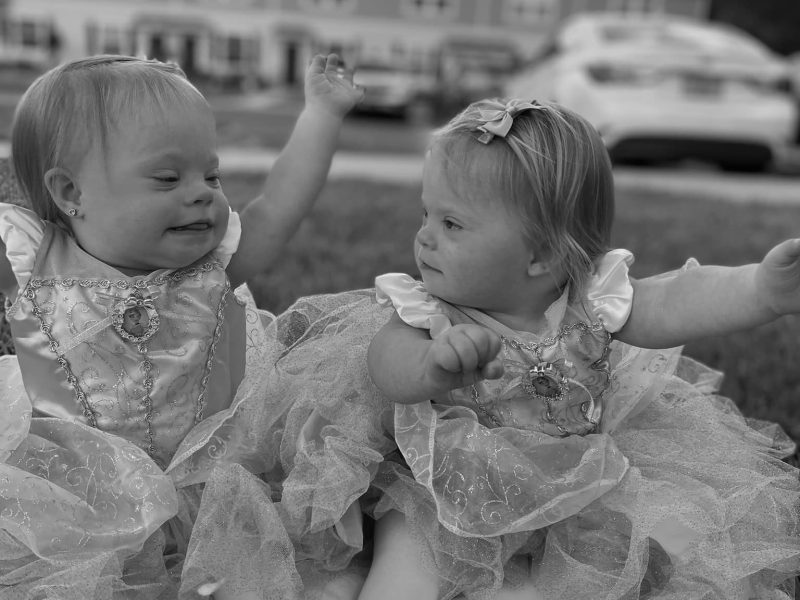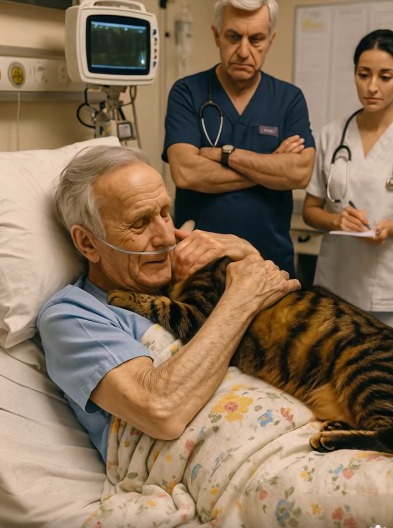Eleanor’s camera had gathered dust since the funeral. For two years the only pictures she took were of sky—blank, blameless blue—because every face she aimed at looked like Ava’s empty pillow. Grief turned the house into a museum: finger paintings still taped to the fridge, a half-finished puzzle waiting on the coffee table as if any moment a small laugh might sprint down the hall and complete it. Friends stopped asking if she was “better yet,” and Eleanor stopped pretending. She scrolled adoption sites at 3 a.m., not to replace her daughter but to resurrect the part of herself that had died with her.
The thumbnail appeared on page nine of Grace Adoption Services: chestnut curls, gap-toothed grin, eyes the exact hazel rimmed with gray that Ava had inherited from Joseph. The caption read “Charlotte, age 5.” Eleanor’s heart lurched so hard she tasted metal. She printed the photo, held it beside Ava’s last school picture, and felt the impossible: hope. By dawn she had memorized every freckle, and by nine she was on the phone pleading for a meeting that afternoon.
Samantha, the agency counselor, listened while Eleanor’s story tumbled out—leukemia, the divorce, the silence that lived where lullabies used to. “I know resemblance isn’t reason,” Eleanor finished, voice shaking, “but it feels like a door opening.” Samantha warned that foster children are not echoes, yet she scheduled the park introduction. Eleanor arrived early, clutching colored pencils and bunny-shaped cookies, terrified that Charlotte would sense the desperation beneath her smile.
Charlotte skipped toward the bench exactly as the photo promised, clutching a stuffed elephant. Within minutes they were drawing flowers on the same page, heads nearly touching. When the girl asked, “Will you read to me?” the words hit Eleanor like a first kick in the womb. Over the next month Charlotte visited the house, twirled in Ava’s old yellow bedroom, and asked why there were so many boxes of toys. “They’re waiting for someone who likes stories,” Eleanor answered, and Charlotte declared that someone was her.
Telling Joseph felt like peeling a scar. He arrived with tulips and caution, eyes sweeping the room for relics of the daughter he had buried and the wife he had failed. Charlotte peered around his legs, offered the elephant, and said, “You can share.” Something softened; grief cracked just enough for light. Joseph began staying for dinner, then for bedtime stories, his voice finding the old rhythm of dragons and princesses. Eleanor caught herself listening, almost believing the family she mourned could be rebuilt with new bricks.
Then Samantha’s urgent call: Charlotte’s birth mother had surfaced, claiming Joseph could be the father—an affair during a brief separation years ago. The room spun; history felt like quicksand. Joseph admitted the possibility, pale but steady, and agreed to a paternity test. Waiting weeks stretched like chemo nights—Eleanor soothed Charlotte’s nightmares while her own grew teeth. She prepared to lose everything again, rehearsing good-bye speeches in the shower.
The envelope arrived on a rainy Saturday. Not the father. Relief hit so hard Eleanor’s knees buckled; Joseph wept openly while Charlotte colored rainbows around their feet. Samantha confirmed the birth mother would sign away rights. At the final court date Eleanor dressed Charlotte in a blue frock embroidered with tiny cameras—her way of saying memory and future can coexist.
When the judge declared the adoption final, Eleanor lifted her daughter and whispered, “Welcome home, little light.” Ava’s photo stayed on the mantel, not as ghost but as guardian. The house was no longer a museum; it was a studio where shutter clicks captured first days of school, lost teeth, Joseph teaching two-wheel balance, and Eleanor’s lens finally pointed forward. Grief had not vanished; it had simply made room, proving that love expands rather than divides, and that sometimes the bravest thing a broken heart can do is beat again for someone new.


